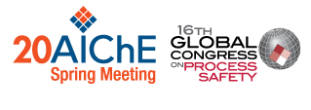
The AIChE Spring Meeting & GCPS is the year’s key technical conference for practicing chemical engineers. Our new virtual experience has been developed along with our chairs, presenters, and exhibitors to ensure the new format will provide you a first-rate experience....

Letters & Certificates of Participation
You will be able to request or download a letter or certificate of participation after the meeting has concluded. There are two ways to obtain these documents:
• Conference Speakers and Chairs can generate a letter and certificate of participation via their confex portal. If you need help accessing confex, please contact programming@aiche.org.
• Attendees and other participants can contact certificates@aiche.org to obtain a letter and/or certificate.
Your Attendee Guide to the Virtual Meeting
Get all you need to know to have a productive, engaging, and enriching experience at the first Virtual AIChE Spring Meeting & Global Congress on Process Safety and co-scheduled Frontiers in Particle Science and Technology Conference. View the Attendee Guide now!




























